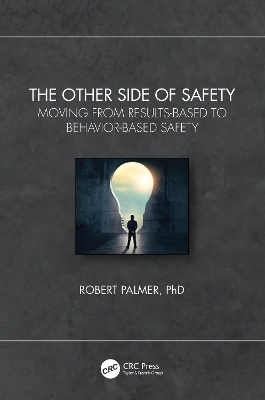
The Other Side of Safety
CRC Press (Verlag)
978-1-032-37560-1 (ISBN)
The problem with the way the safety industry functions is three-fold: (1) the dysfunctional relationship between business and safety leaders, (2) the practice of Results-Based Safety, and (3) the creation of a false reality. This book presents an insightful and practical approach to how you can move your safety program from Results-Based to Behavior-Based Safety.
The move involves understanding what motivates behavior, utilization of consequences, practicing the seven steps of performance coaching, creating accurate safety campaigns, and defining evidence of a healthy Behavior-Based Safety program—this is the other side of safety..
The text:
Defines the four major motivations, explains how they work, and how safety leaders can use the right motivation for the right person to help them practice safe behavior
Explains how to maximize the impact of reinforcement consequences and minimize punitive consequences in a way that is alingned with an individual’s motivation
Implements the seven steps of performance coaching conversations, how safety and business leaders can model fluency and frequency to shape behavior to habit strength
Provides clearly defined evidence of a healthy Behavior-Based safety program by measuring outcome like locus of control, self-esteem, self-efficacy, and self-actualization
Highlights the distinction between Results-Based Safety (RBS) anecdotal practices from the science of Behavior-Based Safety (BBS) methodology
Showcases how the distinct difference between a mechanistic and organic culture, and how the four phenomena can be utilized to drive safety culture on purpose
Discusses the importance of expanding from lagging indicators to leading indicators for robust metrics and predictability
Addresses how the significant negative impact of "telling people what to do" and re-focuses on coaching people on "what to think"
The book provides definitions, examples, and applications that focus on how safety and business leaders can influence the behavior of people, impact their culture, and support healthy relationships. It will serve as an ideal text for students, professionals, and researchers in the fields of ergonomics, human factors, human-computer interaction, industrial-organizational psychology, and computer engineering.
Robert Palmer has a PhD in Industrial Organizational Psychology. He is an Organizational Development Leader with 18 years of industry experience. Expert in designing employee experiences based on the science of human performance, performance management, talent management, change man-agement, and organizational design. Dr. Palmer utilizes technology and people science to create organic cultures that help people do their best work by linking performance initiatives to business strategies and outcomes. Dr. Palmer’s expertise is in creating agility in the workforce to deliver a special-ized customer experience and align to business needs through organiza-tional efficiency, and employee performance. Global project management experience gained from international business projects in India, Israel, and Europe.
Forward
Introduction
Part 1: The Problems with the Way Safety Functions
Chapter 1: Ineffective Leadership Between Business and Safety Leaders
1.1 The Focus of Business Leaders and Safety Leaders Are Not Aligned
1.2 Leading with Authority is Dangerous Leadership
1.3 The Lack of Diversity in Personality Types of Leaders
Chapter 2: Practicing Results Based Safety (RBS)
2.1 Good Intensions Are Not Science
2.2 Using Lagging Indicators is the Wrong Premise for Problem Solving
2.3 Pursuing Results is Results Based Safety
Chapter 3: Creating A False Reality
Part 2: Applying the Science of Behavior
Chapter 4: What Motivates Behavior
4.1 Extrinsic Motivation
4.2 Identified Motivation
4.3 Intrinsic Motivation
4.4 Introjection Motivation
4.5 Emotional Intelligence
Chapter 5: Focusing on the Utilization of Consequences
5.1 Maximizing the Impact of Reinforcements (Pr, Nr, Re)
5.2 Minimizing the Impact of Punitives (Pu/Pe/Ex)
5.3 Clarification of Terms
Chapter 6: Practicing Performance Coaching
6.1 Performance Coaching vs. Development Coaching
6.2 The Seven Steps of Performance Coaching Conversations
6.3 Demonstrating Fluency of the Seven Steps of Performance Coaching
6.4 Practicing Frequency of Reinforcement to Shape Behavior to Habit Strength
Chapter 7: Safety Campaigns Should Be Safe Behavior Campaigns
Chapter 8: Evidence of Healthy Behavior Based Safety Program
8.1 Locus of Control
8.2 Self-Esteem
8.3 Self-Efficacy
8.4 Self-Actualization
8.5 Full Functioning Individuals and Teams
8.6 Perceptual Schematic
Part 3: Structuring the Culture for Functional Safety
Chapter 9: Designing the Safety Culture on Purpose
9.1 Establishing Safety Culture Leadership
9.2 Leadership Styles
9.3 Leadership Practices
9.4 Leadership Influence
Chapter 10: Establishing Safety Culture Infrastructure
10.1 Mechanistic or Organic Culture
10.2 Impact of Cultural Phenomena
10.3 Linking Requirements with Goals
10.4 Integrating Expectations with Achievement
Chapter 11: Create a Fully Functioning Safety Culture
11.1 Alignment of Corporate and Safety Culture
11.2 Creating Leading Indicators
Conclusion
References
| Erscheinungsdatum | 08.11.2022 |
|---|---|
| Zusatzinfo | 2 Tables, black and white; 2 Line drawings, black and white; 2 Illustrations, black and white |
| Verlagsort | London |
| Sprache | englisch |
| Maße | 156 x 234 mm |
| Gewicht | 285 g |
| Themenwelt | Technik |
| Wirtschaft ► Betriebswirtschaft / Management ► Logistik / Produktion | |
| ISBN-10 | 1-032-37560-4 / 1032375604 |
| ISBN-13 | 978-1-032-37560-1 / 9781032375601 |
| Zustand | Neuware |
| Haben Sie eine Frage zum Produkt? |
aus dem Bereich


